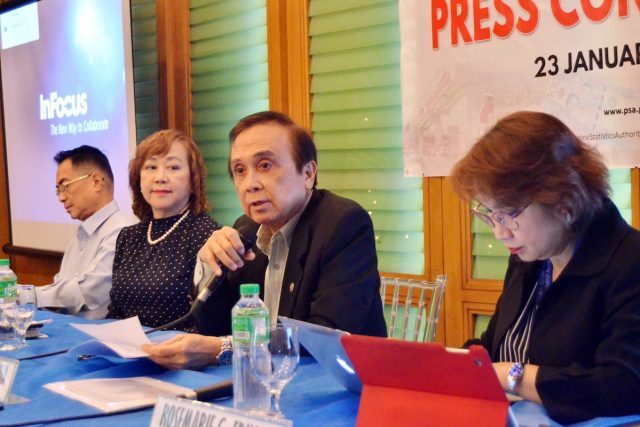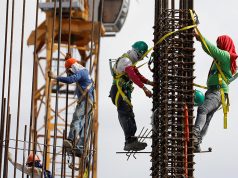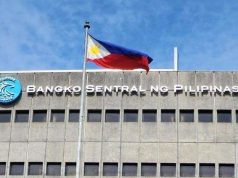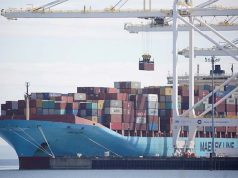
MANILA – The Philippines remains one of the fastest-growing economies in Asia as its Gross Domestic Product (GDP) grew by 6.6 percent in the fourth quarter of 2017, bringing full-year growth to 6.7 percent.
In a press briefing on Tuesday, National Economic and Development Authority (NEDA) Director-General and Socioeconomic Planning Secretary Ernesto Pernia said the economy’s growth follows China’s 6.9 percent and Vietnam’s 6.8 percent.
Last year’s 6.7-percent economic growth was slightly lower than 6.9-percent expansion in 2016, but still within the government’s 6.5 percent to 7.5 percent full-year target.
“To me, this is a good performance, given the fact that it is already normal for post-election years to witness a decline in economic growth,” he said.
Government data indicated that among the major economic sectors, industry recorded the fastest growth of 7.3 percent in the fourth quarter, followed by services which grew 6.8 percent.
Agriculture grew by 2.4 percent, rebounding from a 1.3-percent decline in the same quarter of the previous year.
On the demand side, the NEDA chief said growth in the fourth quarter was mainly fueled by public spending which surged 14.3 percent from 4.5 percent in the previous year.
“This is very much in line with the government’s commitment to timely delivery of public services and social protection programs, including assistance to victims of typhoons as well as in the Marawi conflict, public scholarship programs, and health expenditure programs,” he said.
EXPORTS OF GOODS BOUNCE BACK
On the expenditure side, Pernia further said growth in exports of goods bounced back to 20.2 percent, offsetting the services exports sector’s slowdown which was attributed to miscellaneous services, including the business processing outsourcing (BPO).
“We can take this as an indication that the current market profile of the BPO sector is ripe to move into higher value added services,” he said.
Domestic demand growth also strengthened to 7.3 percent in the fourth quarter, while fixed investments accelerated to 9.3 percent.
“This is indicative of businesses’ continued confidence in the long-term prospects of the Philippine economy,” he added.
Pernia said public construction spending also surged 25.1 percent, offseting the 2.9-percent contraction in private construction.
NEDA officials attributed the slowdown in private construction activities to various factors, such as near saturation of the market for office spaces, smaller floor area of residential units built, and the natural business cycle for the industry.
“It’s possible that it reflects the impending glut of office space for BPOs for example,” said Pernia.
FOR 2018: 7-8%?
With the solid economic growth rate last year, Pernia was optimistic the economy would further rise to 7 to 8 percent this year.
“Our hope for 2018 and in the medium-term is to shift the trajectory upwards some more,” he said. “The Build Build Build program, of course, will continue its momentum in providing more opportunities to our country such as investments, job creation, connectivity, and dependable delivery of public services.”
Pernia expects domestic demand to pick up in the next quarter as household consumption will likely improve following the recently approved tax reform package, which spells higher take-home pay for 99 percent of Filipino taxpayers.
He said household consumption is also seen to benefit from expanded employment opportunities from the government’s infrastructure program.
INTRINSIC STRENGTH
Despite the slower domestic output in the last quarter of 2017, Bangko Sentral ng Pilipinas (BSP) Governor Nestor A. Espenilla Jr. said this remains strong, calling it “the underlying strength of the economy that rests on increasingly balanced foundation.”
“This gives BSP ample policy space to stay focused on meeting its inflation target and pursuing ambitious financial sector reforms,” he added.
BSP has set the 2018-2019 inflation target between 2 to 4 percent, with inflation seen to average at 3.4 percent this year and 3.2 percent next year.
In 2017, inflation averaged at 3.2 percent.
This “within target inflation rate” backs monetary officials’ confidence of keeping the central bank’s policy stance for a long period now.
Analysts, however, forecast a hike in the BSP’s key rates starting in the second quarter this year given the expected inflation uptick, as a result of higher excise taxes on fuel, among others, due to the tax reform program.







